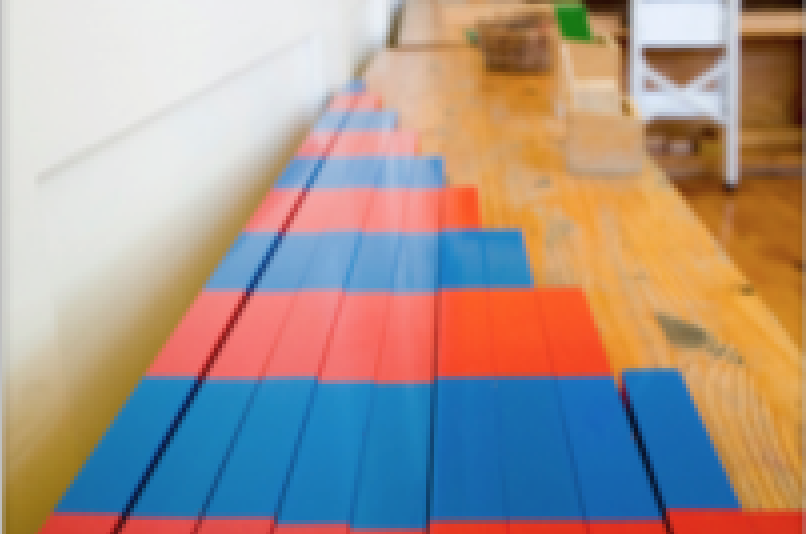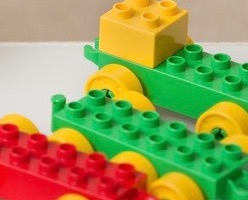This activity was developed for our graduate students (prospective early childhood teachers). It helps adults to understand how determining how many can involve many different strategies and ideas.
by Herbert P. Ginsburg and Rita Sanchez
Activity for Teacher Educators
One technique often used in math workshops is to have prospective or practicing teachers explore their own mathematical thinking. Basically, the method is first to give teachers a problem to solve, often a non-traditional problem, second ask them how they solved it, and third discuss the methods and what the experience means for education. In this way, teachers can learn that they use some interesting, non-conventional methods. Further, the experience may help them understand that children, too, may solve problems in non-conventional ways, and that learning about children’s methods and using them to foster education can be extremely valuable.
For these reasons, we developed the following activities for our graduate school students in a course called The Development of Mathematical Thinking. The activities are taken from The Grapes of Math: Mind-stretching Math Riddles (Tang, 2001). Students in the class were required to solve three different riddles and to explain their thinking.
Solve the following riddles. What were some of the addition and/or subtraction strategies that you used? Explain your mathematical thinking. Provide a snapshot and/or video as evidence of your mathematical thinking.
Our graduate students were working on our Mediathread web platform that enabled them to open the three math puzzles and then submit written answers, including pictures of their solutions, or even videos of how they solved the problems. We have selected some student responses that illustrate the different kinds of thinking the students used to solve the problems. Imagine a class discussion of these strategies and their implications for education.
The three math puzzles are shown below, followed by some student responses, which encompass a very wide range of experience.
Math Puzzles
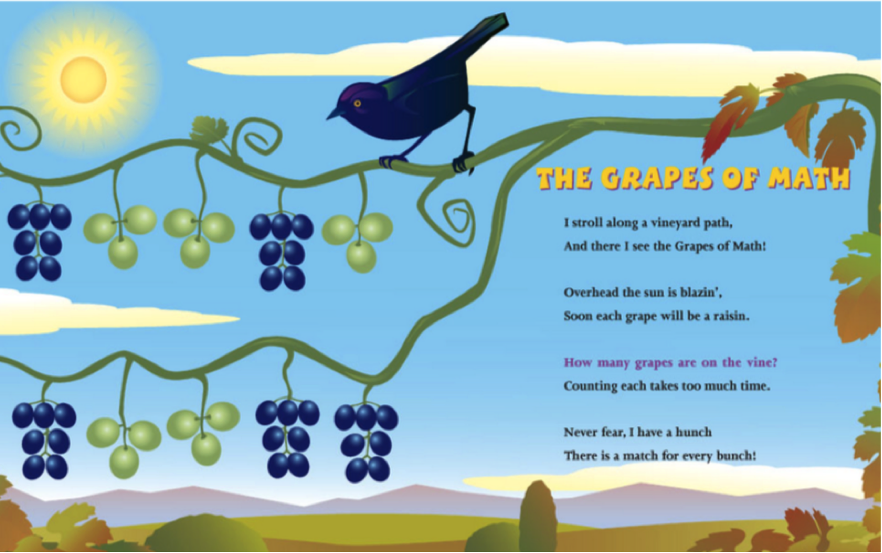
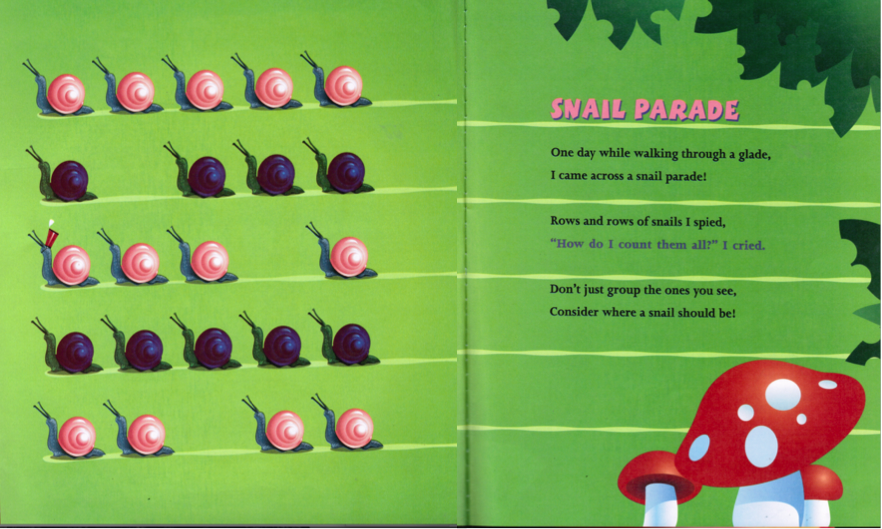
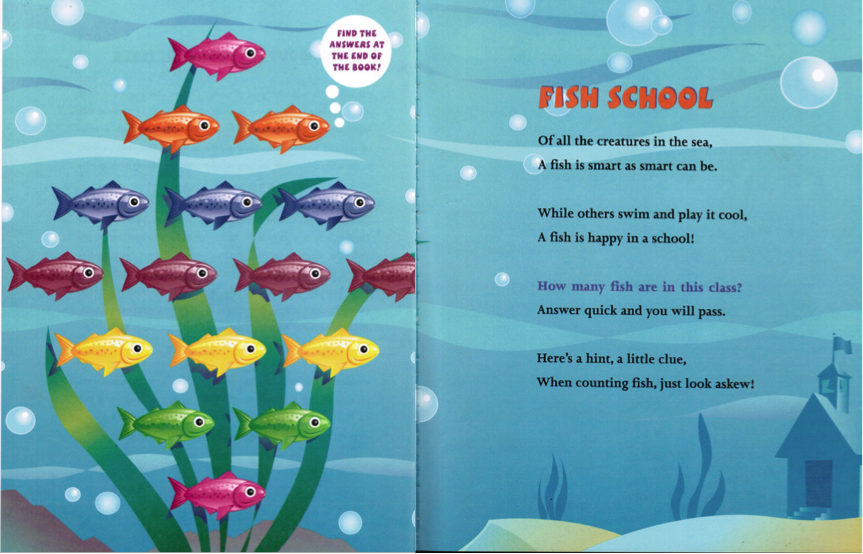
Student Response Samples
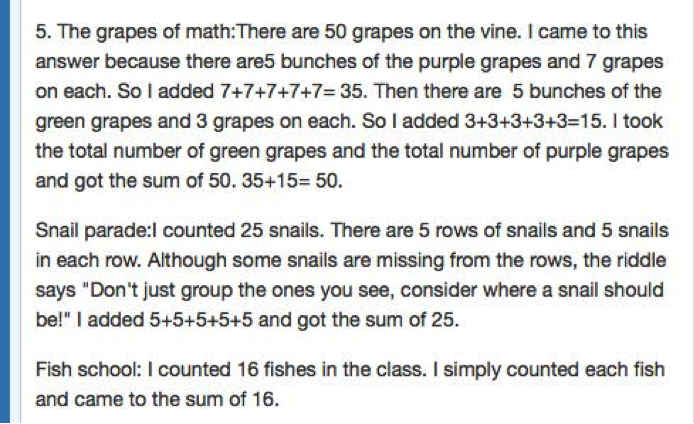
This student used a grouping strategy for the grapes, as is clearly explained. In the second solution, for the snail problem, she added the fives but forgot to subtract the three missing snails. The student simply counted all the snails and did not do any form of grouping. This could have been a result of the prompt phrase “consider where a snail should be!” Under one interpretation, the student may think there should be 25 because a snail should be where it is unseen, but a different student might interpret that to mean that she pay attention to the lack of a snail and subtract it. People often solve the problems they perceive rather than the problems the authority intends to present. It is for this reason that having prospective teachers engage in a variety of these types of problems can be useful in informing their understand of mathematics and children’s thinking.
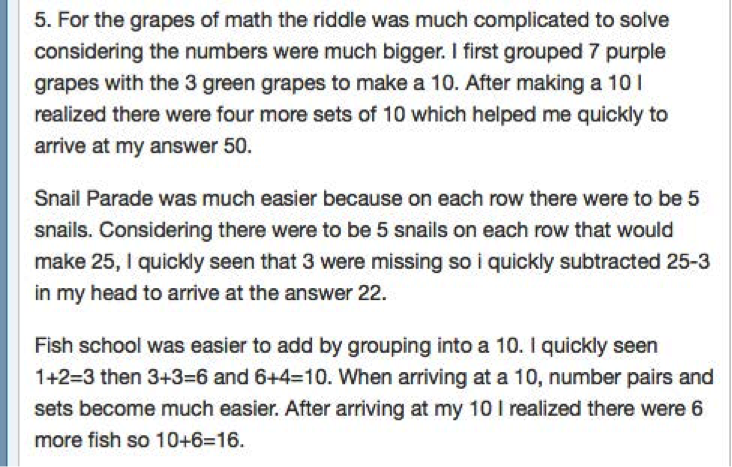
This student did a different grouping strategy for the grapes problem, adding each group of seven to a group of three and then adding the tens. This is very sensible. In the snail puzzle, the student saw that there were five rows of five and then did the necessary subtraction. She solved the fish school puzzle by adding successive rows, getting to 10 and then continuing the addition.
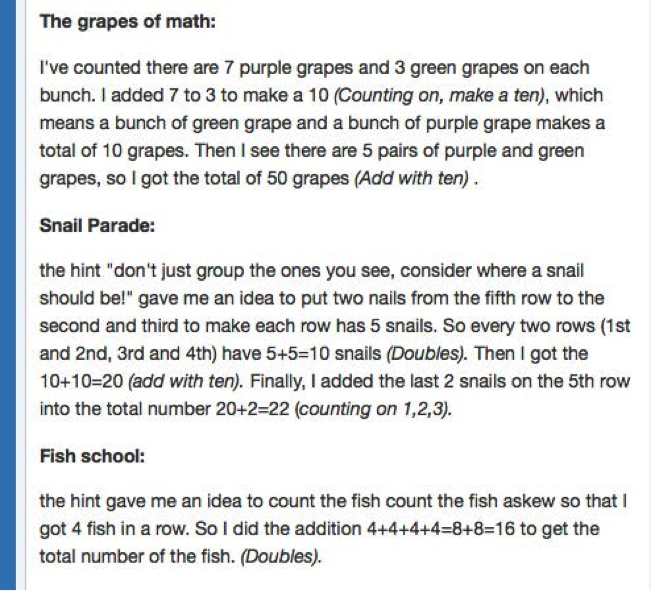
This student used a strategy similar to that of the previous student for the grapes problem. She said that she counted on three more from seven to get the 10, but we are skeptical of her account. She probably knew the number fact 7 + 3 = 10. But it doesn’t matter. The main idea is grouping the tens. Her answer to the snail parade is distinctive. Instead of getting the possible total of 25 and then subtracting, she cleverly regrouped the rows by taking two snails from the fifth row and putting them in the first row, and the remaining two from the fifth row and putting them into the third row. She then added the rows as described. (Of course she could have just multiplied five by four.)
Summary
Hopefully, this gives you a sense of the variety of responses to this type of activity.
This material can be used as a springboard for discussion in a class or a teacher workshop. The main point is that students used many different methods to solve the three how many questions. The least efficient is simply counting everything, a method used by two students—at the graduate school level. The other methods involved grouping of one kind or another.
A discussion of these results might involve the following issues (and no doubt others):
- Why count if easier methods are possible?
- The possible value of mental math.
- Several different solution methods are possible for each problem.
- How is it possible for two different methods to yield the same result? Thus, for the grapes problem, one solution is essentially (4 x 7) + (4 x 3) and the other is 4 (7 + 3). How do these methods relate to one another? What does the comparison tell us about the distributive property?
- The development of the solution method is an act of mathematical thinking.
- It is possible for adults to make mistakes on apparently simple problems.
- And finally, and most importantly, what are the implications for teaching children how many? One answer should be abundantly clear: we need to teach children to think in mathematically creative ways.
- Does this experience suggest anything about the value of discussions in the classroom? For example, can children learn something important about math from seeing that others use a variety of solution methods?

